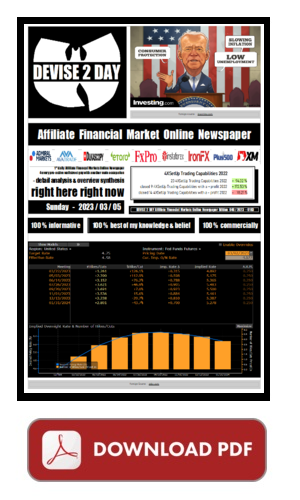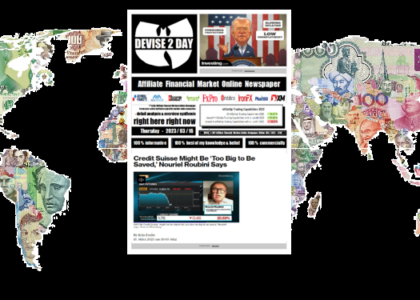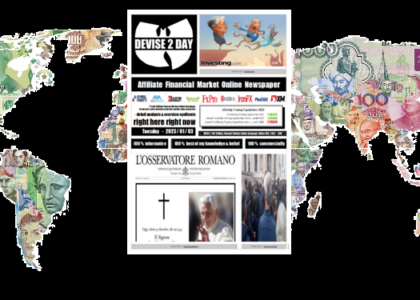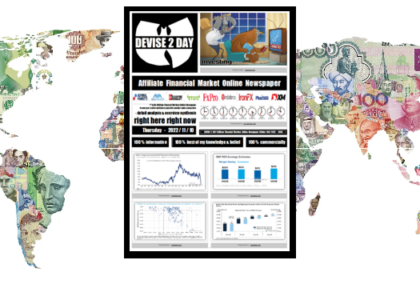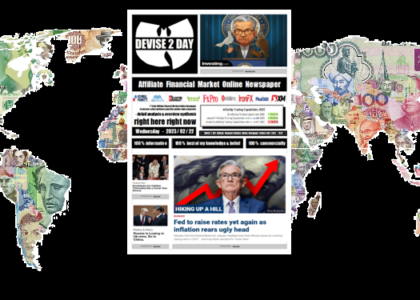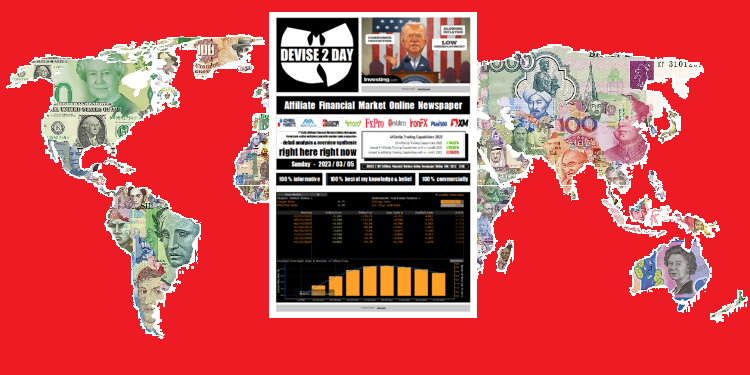
2023/03/05 (183.046) Technical Analysis – … & IDC-EURUSD
Still Long 4XSetUp Trading Capability In The EURUSD
– I Still Think That The ECB Has Much More To Do As The FED
Dollar Steadies As Traders Weigh Fed Outlook After Yields Rised Above 4% On Thursday
The dollar index steadied near 105 on Friday as investors continued to assess the outlook for Federal Reserve monetary policy in light of recent commentary from central bank officials. Atlanta Fed President Raphael Bostic supported 25 basis point rate increases and said the central bank could be in a position to pause rate hikes sometime this summer. However, Fed Governor Christopher Waller maintained a hawkish view, saying rates could peak higher if labor and inflation numbers don’t cool as expected. On Thursday, the greenback gained about 0.6% after fresh data pointed to a still-tight labor market, reinforcing expectations of prolonged tightening. Investors now look ahead to US services activity data and further central bank commentary on Friday.
Still, bond yields continue to rise and the 10-year benchmark rose above 4% for the first time since November, on Thursday. A surge in labor costs and a pullback in jobless claims pointed to a still-tight labor market and opened the door for further interest rate increases. On the policy side, Fed Bostic said he is in favor of a quarter-point rate hike and the central bank could pause rate hikes sometime this summer. Some other Fed officials have said they are in favor of hiking by half a point and warned that rates must go higher to bring down inflation to its target. In corporate news, shares of Salesforce jumped 11.5% after upbeat quarterly results and guidance. Tesla plunged 5.8% as its “Master Plan 3” fell short of details. Silvergate Capital plunged 57.7% after the company delayed its 10-K annual report.
Wall Street Ends Higher, Posts Weekly Gain
The Dow Jones closed 386 points higher on Friday, while the S&P 500 and Nasdaq 100 gained 1.6% and 1.9%, respectively, as Treasury yields eased from their recent highs and investors were less concerned about monetary policy path after Federal Reserve officials’ speeches. The sentiment was boosted after Atlanta Fed President Raphael Bostic said that he still sees the central bank raising rates by another quarter percentage point later this month. The market movement came in tandem with easing Treasury yields, which brought some respite to beaten-down technology and other high-growth stocks. Meanwhile, data showed the US services sector was still growing, even though the Federal Reserve has been trying to cool the economy with an aggressive tightening campaign. For the week, the Dow added 0.9% and the Nasdaq gained 1.3%, while the S&P 500 snapped a three-week decline by rising 0.9%.
US Services Growth Beats Estimates:
US Services Activity Returns to Expansion
US Private Sector Output Stabilizes in February
These Were The Last New US Econimic Data On Friday
The ISM Services PMI for the US was at 55.1 in February 2023, little-changed from 55.2 in January and above expectations of 54.5. Faster increases were seen for new orders (62.6, the highest since November 2021 vs 60.4 in January), new export orders (61.7 vs 59), and employment (54, the highest since December 2021 vs 50). Also, price pressures eased (65.6 vs 67.8) and supplier deliveries fell (47.6, the fastest delivery performance since June 2009 vs 50). Meanwhile, inventories rose (50.6 vs 49.2) and production slowed (56.3 vs 60.4). “Business Survey Committee respondents indicated that they are mostly positive about business conditions. Suppliers continue to improve their capacity and logistics, as evidenced by faster deliveries. The employment picture has improved for some industries, despite the tight labor market. Several industries reported continued downsizing.”, Anthony Nieves, Chair of the ISM said.
The S&P Global US Services PMI came in at 50.6 in February 2023, little-changed from a preliminary estimate of 50.5 and above January’s 46.8. The latest data signaled only a marginal uptick in business activity, bringing to an end a seven-month sequence of contraction. New business declined at the slowest pace since last October, as demand conditions improved despite higher interest rates and inflationary pressures, while new export orders declined for the ninth month running and at a solid rate. The rate of job creation was the quickest since last September, but was marginal overall, and backlogs of work were unchanged following four monthly declines. On the price front, input cost inflation was the second-slowest since October 2020, while the rate of charge inflation accelerated to the highest since October. Finally, business sentiment strengthened to a nine-month high.
The S&P Global US Composite PMI stood at 50.1 in February 2023, little-changed from a preliminary estimate of 50.2 and well above January’s 46.8. The latest data signaled an end to a seven-month sequence of contraction and indicated broadly stable levels of business activity at private sector firms. New orders declined the least in four months, while the rate of job creation accelerated to a five-month high and backlogs of work fell for a fifth month running. On the price front, input costs rose at the second-slowest pace since October 2020. Nonetheless, output charges increased at a steeper pace, as firms sought to pass through higher cost burdens to their customers.The current scenario on US WallStreet is forcing me,
forcing every independently thinking financial market participant, to rethink at times!
And last weekend and also this weekend I ask myself whether I have to correct some things?
The answer is YES! And therefore my column, for the whole month of March 2023, with a concrete trading account
asset management strategy and/or tactic, for the next 12 months. Because I don’t know any better than that! That`s it…
The US Federal Reserve has two options at its meeting later this month, but neither is particularly attractive, Allianz market analyst El-Erian told CNBC. Markets expect the central bank to hike interest rates by another 0.25 percentage point at its next meeting on March 21-22. However, they now also give a small chance to the possibility of a 0.50 percentage point increase – an option that El-Erian believes is desirable but not ideal. “If they’re really data dependent, then they should go back to 50 basis points,” El-Erian, the alliance’s chief economic adviser, told CNBC’s Squawk Box. However, if they did, “they would do two things. You weaken your own forward guidance, and you undermine the disinflationary narrative.” Fed Chair Jerome Powell said in early February inflation was beginning to moderate but expected the process to take a long time and warned that interest rates could rise more than markets had expected if economic data didn’t play along. “The disinflation process, which is the process by which inflation goes down, has started in the goods sector, which represents about a quarter of our economic output,” Powell said. “But there is still a long way to go. We are still at the very beginning.” At its last meeting in early February, the Federal Reserve trimmed its aggressive rate hikes to a quarter of a point or 25 basis points, signaling that that might be the way forward. However, last week’s inflation numbers have raised concerns that the Fed is falling short in its fight against inflation with smaller hikes.
“The reality is we’re going to act on the data,” Powell said. “So if we continue to get strong jobs reports or higher inflation reports, for example, we may well do more and raise rates more than what’s currently priced in.” Several Fed officials recently hinted that a return to a 50 basis point move is on the table at this month’s meeting. As of Friday morning, the odds for a quarter-point increase were 73% and about 27% for a half-point increase. That’s according to the Fed Rate Monitor tool. Whether the Fed hikes rates by 25 basis points or 50 basis points, both moves would pose problems for the central bank, El-Erian said. “If you stick to 25 and keep interest rates higher longer, which is the alternative, you risk raising rates into a slowing economy, further undermining credibility,” he said. The Fed’s key interest rate is currently within a target range of 4.5% to 4.75%. Futures on Friday signaled expectations that the key rate will rally as high as 5.6% by fall this year before falling again. El-Erian said that recent moves in the bond market, particularly the soaring Treasury yields, stemmed from market participants’ concerns that “the Fed could end up throwing us into a recession that is totally unnecessary.”
The spread between 10-year and 2-year yields is now the most inverse it has been in over 40 years. An inversion of the yield curve has preceded every recession since at least the early 1980s. And the three-month return has also risen well above the 10-year return. The New York Fed’s recession model signals a nearly 60% probability that the US economy will slip into recession by December 2023. Scores above 40% in this forecasting model have correctly predicted every recession since 1970. Credit card debt is also rising – an indication that Americans are having to borrow more to finance their consumption. At the end of 2022, total credit card debt rose to a record $930.6 billion. That was 18.5% more than a year earlier, according to TransUnion’s latest quarterly report. The average balance rose to $5,805 over the same period, according to TransUnion. Also, more than half of the economists surveyed by the National Association for Business Economics estimate the probability of a recession this year at over 50%. Respondents identified higher interest rates and costs as the top downside risks to their outlook, while the top potential upside risks are lower interest rates and costs, as well as higher labor force participation and better supply chains.
However, the EURUSD Hovered Around 1.06
The euro hovered around $1.06 at the start of March,
after depreciating 3.8% against the US dollar in February, its biggest one-month decline since the 4.6% fall seen during last April.
It has also recovered from a nearly two-month low of $1.053 touched on February 27th, helped by hotter-than-expected inflation data from the Eurozone and hawkish comments by European Central Bank officials. Data showed the bloc’s inflation eased further to 8.5% in February, compared with market consensus of 8.2%, while the core rate hit a fresh record high. Meanwhile, ECB President Christine Lagarde said that rates will have to rise higher and stay higher for some time to combat inflation, while board member Joachim Nagel said the central bank might need significant rate hikes beyond March and should accelerate the rundown of its oversized bond portfolio. Elsewhere, the US Federal Reserve is seen holding rates higher for longer following the release of solid US data.
good morning, good day, and/or good night
at whatever time, wherever you are !
right here right now :

